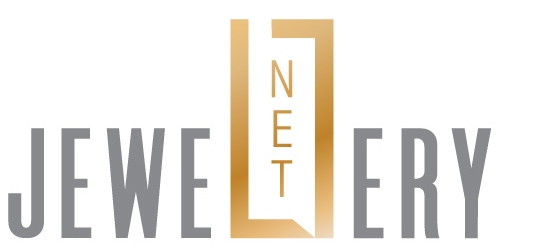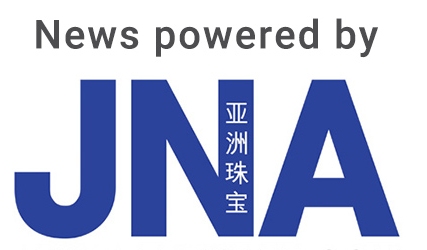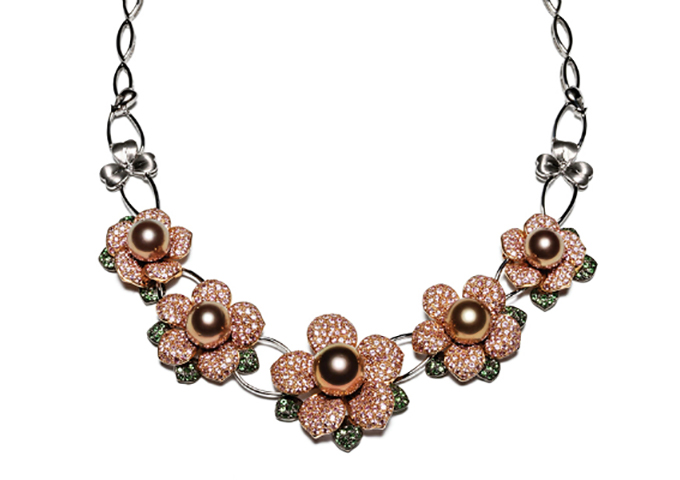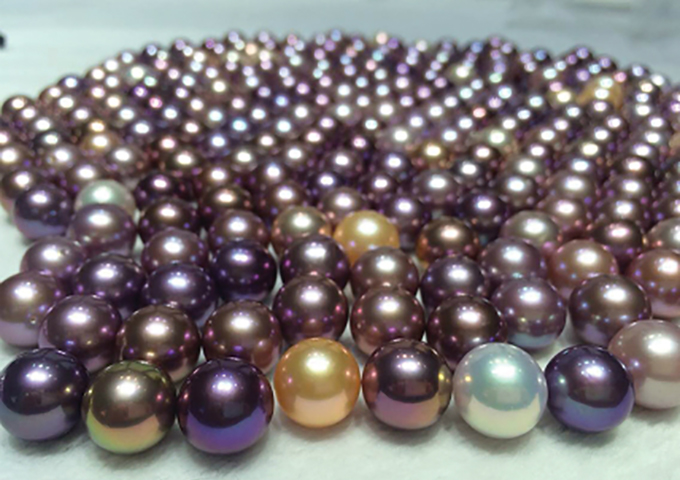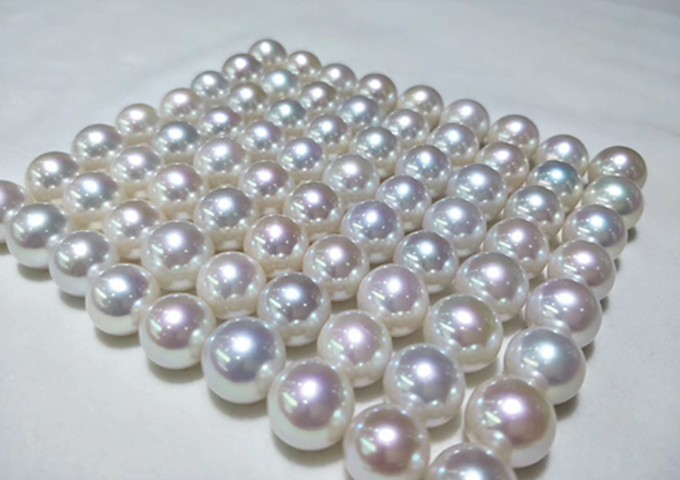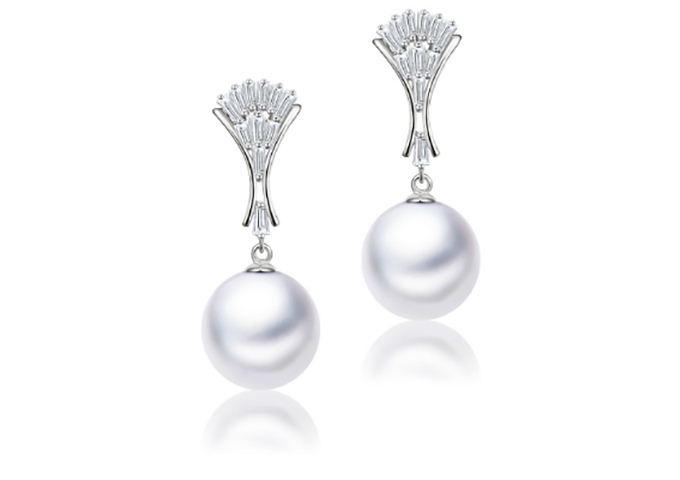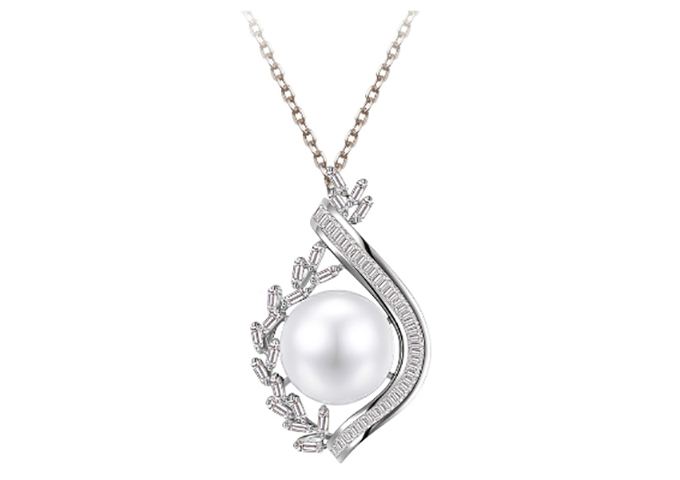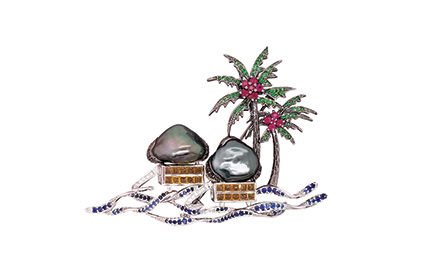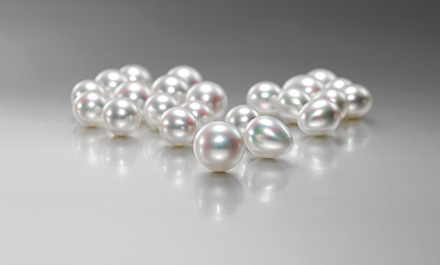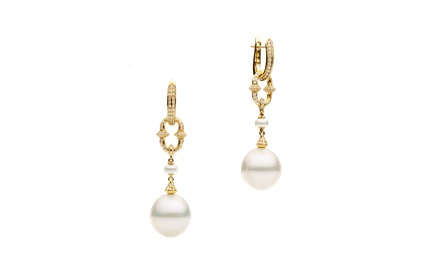China’s digital economy is thriving now more than ever. With online sales channels offering new opportunities to jewellers, the country’s pearl suppliers are innovating their products and services to succeed in the digital era.
China is benefiting from a booming digital economy. Government data showed the country’s online retail sales reached RMB5.15 trillion (around US$744.9 billion) in the first half of 2020.
Online jewellery sales are also gaining from this development, thanks to new media such as livestreaming, which features real-time product presentations via simultaneous recording and broadcast. Pearl jewellery businesses could also prosper in this arena.
Two major industry players – Dragon’s Pearl Co Ltd and Zhejiang Dongfang Shenzhou Pearl Group Co Ltd – talk to JNA about current market trends and their business plans in the digital age.
Opportunity and preparation
Specialising in saltwater pearl farming and wholesaling, Dragon’s Pearl supplies goods to many domestic jewellery brands. It has also been actively developing its own finished jewellery line to capitalise on rising online demand, according to company chairman Cai Wenjiang.
The company was founded in 1999 in Zhanjiang, Guangdong province where it operates a Chinese Akoya pearl farm and processing plant.
Apart from Chinese Akoya pearls, it also sells Japanese Akoya, South Sea and Tahitian pearls. Owing to their quality, the company’s pearls were included in the list of “famous brand products” of Guangdong Province.
Pearl businesses are now adapting to rapid changes in the market, noted Cai.
“The traditional jewellery market has changed drastically in recent years. Consumption activities are shifting to online,” he continued. “This year, in particular, online sales are more active than ever. Many of our clients who are brick-and-mortar stores are trying to sell online. As pearl suppliers, we also need to change.”
Majority of the orders that the company receives are for finished jewellery pieces, which are sold online, since customers no longer buy large amounts of loose pearls and strands, Cai explained.
Dragon’s Pearl is now prioritising online jewellery retailers and new marketing channels. This raises the need to be more aware of trends and to develop products that cater to various consumers via different platforms while offering value-added services that address the needs of online customers.
“We are no longer just a loose pearl supplier. In addition to high-quality pearls and finished jewellery products, we also provide one-stop, end-to-end services, including photo and video shoots, copywriting, packaging as well as delivery. This is a true testament to our mettle,” he stated.
Dragon’s Pearl started adjusting its operations as early as March, which proved critical in the face of the Covid-19 pandemic. Cai said business started to improve in March and April, and almost fully recovered by May and June.
“The impact of the Covid-19 crisis on the jewellery industry is unimaginable. Pearls are recovering faster than other jewellery categories, but we still have to be cautious and prepare for any unexpected situation,” the company official continued.
In value terms, more than 80 per cent of pearls sold in China are imported saltwater pearls. Of these, white Japanese Akoya and South Sea pearls enjoy higher popularity. Akoya pearls of 7mm in diameter or smaller are most in demand. Pearl jewellery pieces in trendier designs and competitive prices are favoured by buyers, with pendants, earrings and Akoya pearl strands moving the fastest.
“I’m optimistic about prospects for pearl jewellery in China since pearls are traditionally revered in Eastern culture,” noted Cai. “There’s a huge potential in the pearl jewellery market. With the advent of digital sales channels, we can reach more prospective buyers and actively promote the pearl culture.”
Innovation and dedication
Freshwater pearl specialist Zhejiang Dongfang Shenzhou Pearl Group – the mother company of Grace Pearl (HK) Co Ltd – is no stranger to technology and innovation. In 2011, the Zhuji-based company launched the Edison pearl, a large-sized nucleated freshwater pearl that often measures 11mm and above in diameter.
Its uniqueness stems from its various colours including dark purple, violet, champagne and metallic tones in addition to white and golden. Their nacre thickness can reach anywhere from 5mm to 12mm after 36 months of farming, compared with the 1.2mm to 7mm range of pearls harvested after 18 months. The pearls have since gained popularity in China and abroad.
Zhan Weijian, chairman of Zhejiang Dongfang, said his company continues to innovate to offer new products while strengthening its e-commerce capabilities to expand the business.
The pearl trader is now manufacturing more smaller-sized pearls to meet the needs of “e-tailers.” It is also exploring livestreaming to promote its brand and Edison pearl jewellery.
It likewise developed “China Red,” an orange and red variety of Edison pearls in 2018. Early last year, the company launched smaller-sized white Edison pearls, which are known as “mini-Akoya” in the market.
“The white Edison pearls have a clean surface, and colours and lustre that are comparable to Japanese Akoya pearls,” claimed Zhan. “We will keep developing new products with more colour varieties as well as more modern jewellery designs.”
Edison pearls have received international recognition, thanks to their lustre, varied colours and competitive prices. According to Zhan, white pearls continue to perform well in the China market. “Larger-sized pearls are more popular in Europe, the US and Japan, while smaller-sized, medium- to top-quality pearls are proven best sellers in China since buyers use these for trendy jewellery catered to young people.”
Zhan further revealed that top-quality Edison pearls continue to gain traction in the European and US markets. He also cited their growth potential in China.
The company official also underscored the importance of government support in the development of a “pearl online economy.” For example, Zhejiang’s Shanxiahu town has invested heavily in cooperation with cross-border e-commerce platforms to build facilities that will house more than 100 livestreaming and e-commerce companies in the years ahead.
The coronavirus crisis posed unprecedented challenges to the jewellery sector, but it also encouraged jewellers to explore new sales channels. Edison pearls, for instance, have benefited from the digital economy. “Sales are still acceptable. I expect these to recover faster after the pandemic,” Zhan noted.
Industry support
The Shenzhen Pearl Industry Association has been actively promoting “talent training,” which involves organising e-commerce courses for pearl industry players. Chen Chunzhu, secretary general of the association, said this initiative is aimed at helping member companies capitalise on e-commerce development by doing livestreaming and cooperating with key opinion leaders or KOLs.
“The pandemic has made pearl businesses consider that the future of the industry could be in e-commerce,” commented Chen.
Founded in 2014, the Shenzhen Pearl Industry Association aims to establish an industry-wide platform that offers knowledge sharing on pearl production, sales and market research to its members.
With nearly a hundred members from around the country, the group promotes sharing of resources and establishing industry standards. It has so far arranged visits all over China including Guangxi, Zhejiang, Zhenjiang and Hong Kong as well as Japan and Tahiti.
It has also organised courses and seminars, covering such areas as pearl grading, photography and intellectual property rights.
Chen further shared her insights on online marketing strategies for jewellers. “It’s all about differentiation of products and consumer groups. Fashionable accessories are more suitable for online sales,” she noted. “As for luxury jewellery, offline customer services still count. The combination of ‘branding and e-commerce’ experience meanwhile is critical for millennials who are at the core of the online customer base.”
She also emphasised the importance of content marketing, noting that an omni-channel business model, which diverts traffic from online to offline, was already a trend even before the pandemic.
“Jewellery is highly specialised and valuable. Sharing short videos or relevant articles with customers can enhance online traffic, promote trust and increase their willingness to buy,” she continued. “They may even develop loyalty towards the brand or the products.”
China’s jewellery industry is also constantly improving in terms of professionalism. The country’s leading pearl enterprises are increasingly focusing on brand management and high-end product development. They are keeping abreast with international jewellery trends while controlling the production of lower-grade pearls, tightening quality control, and continuously innovating. These also contributed to the development of China’s freshwater pearl industry.
“China’s freshwater pearl sector is moving forward from merely a raw material distribution centre in the past. Companies are attaching more importance to product quality, story, design and sales,” remarked Chen. “They are more aware of building brand awareness around the corporate image and culture to distinguish themselves from others.”
